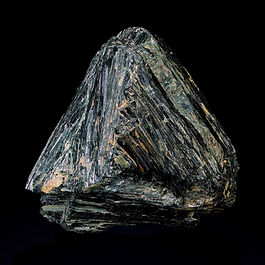top of page

Specimen List

Aegirine With Titanite & Clinozoisite
These three minerals commonly occur together in alkaline igneous rocks, metasomatic zones, and high-grade metamorphic environments. When they appear together on a specimen, the contrast of dark aegirine, honey-brown titanite, and pistachio-green clinozoisite is visually striking and highly collectible.
bottom of page














